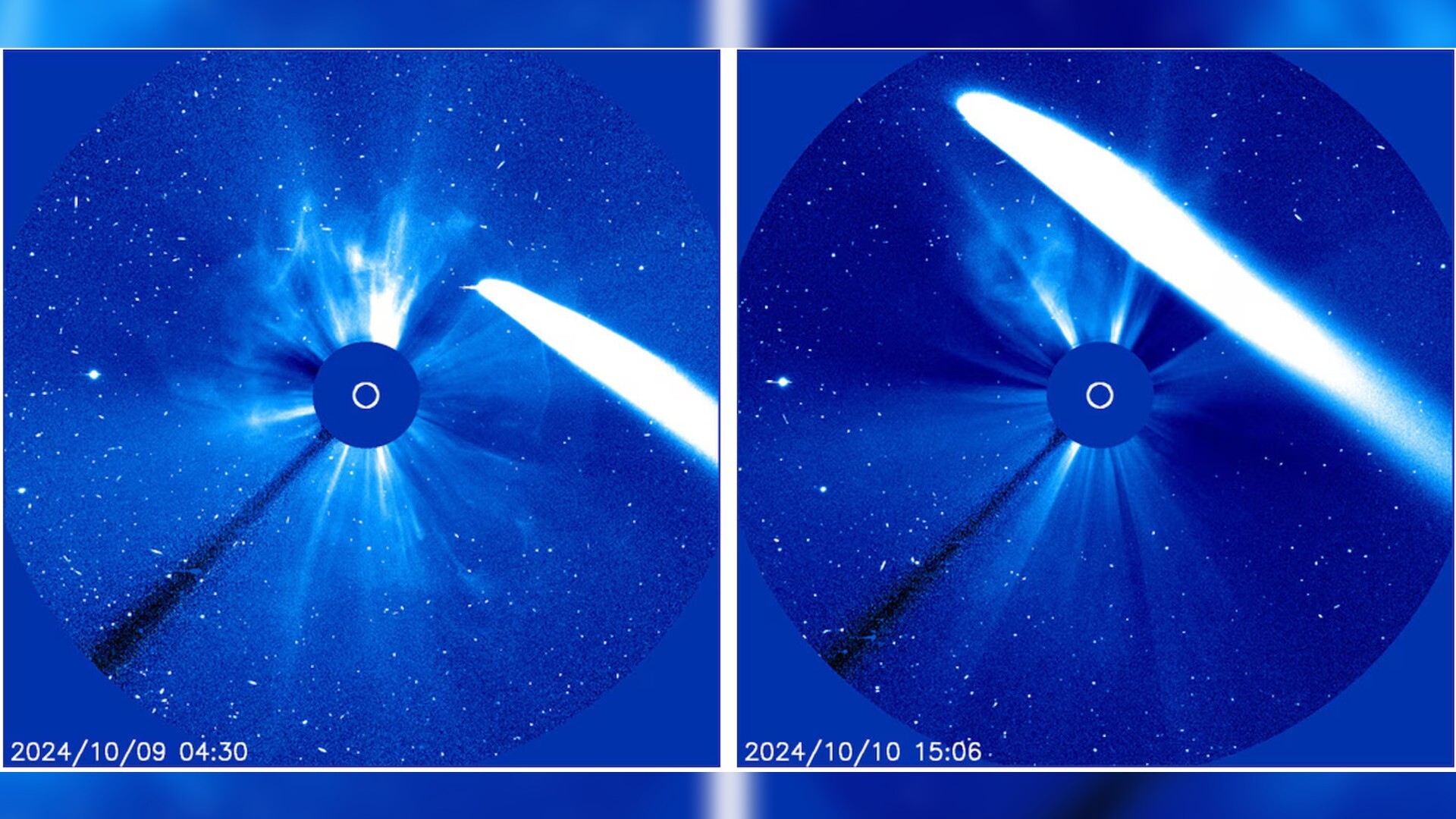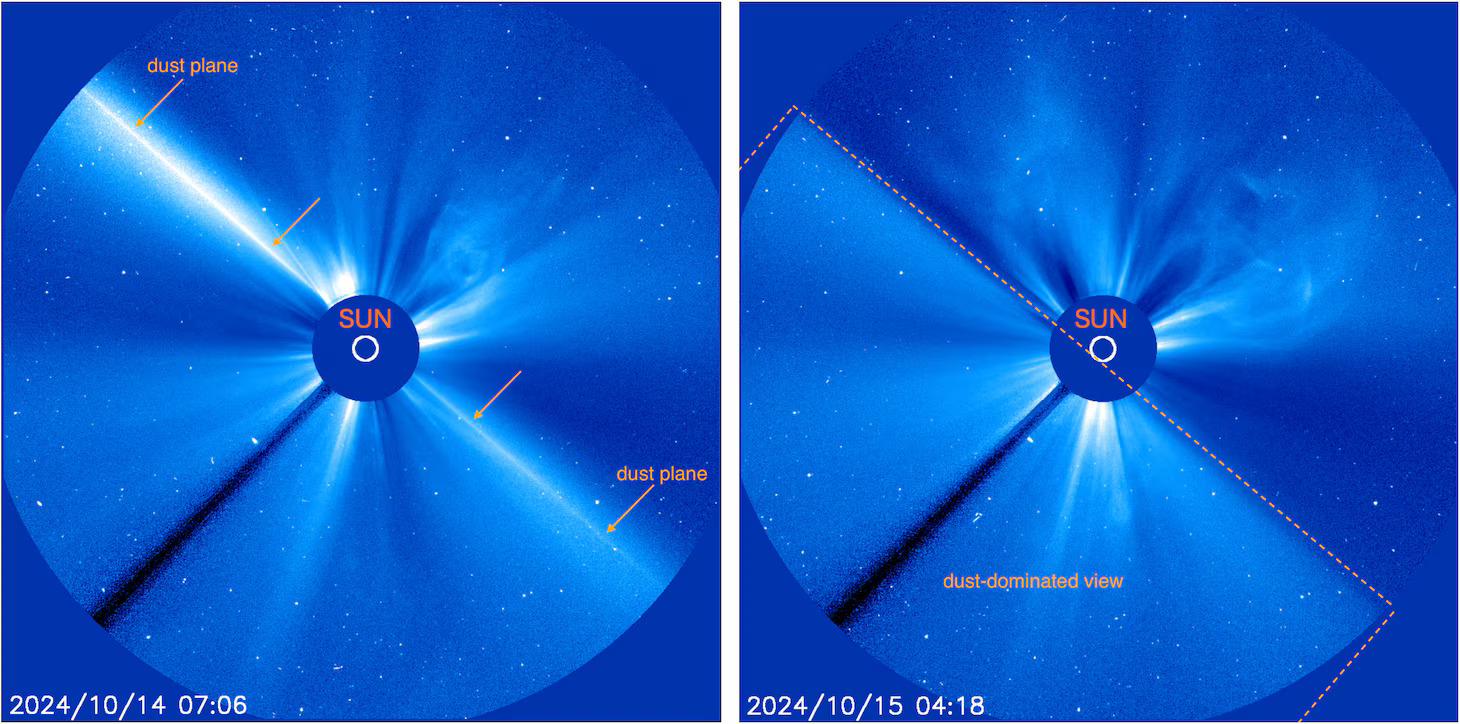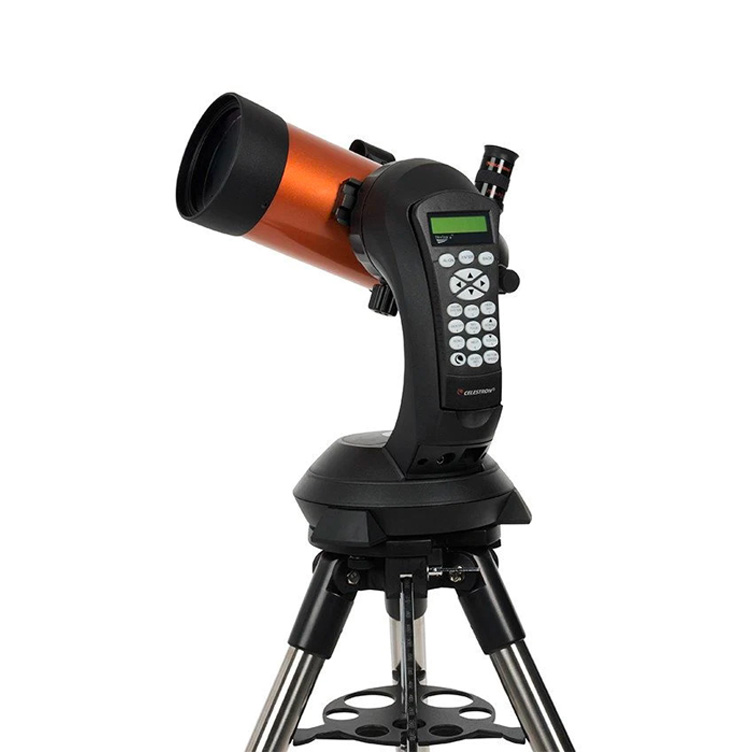
A dazzling comet left behind a dramatic dust tail as it swept around the sun, new photos reveal.
C/2023 A3 (Tsuchinshan-ATLAS) was visible to the naked eye earlier in October as the comet, which is sort of an icy space snowball, flew past the sun and Earth.
Fresh telescope footage from the U.S. Naval Research Laboratory reveals that the comet's dust tail was visible near the sun "for several days", long after the little world left the neighborhood, lab officials stated.
Related: See the 'comet of the century' light up the night sky in breathtaking photos
The comet was photographed using NRL's Large Angle and Spectrometric Coronagraph or LASCO telescope. (A coronagraph is a device that blocks the strong light of the sun, allowing other celestial objects to be visible.)
LASCO spotted the comet's nucleus or heart near the sun, between Oct. 7 and 11. "After the nucleus itself had left the scene, its massive dust trail remained visible for several days," NRL officials wrote in the statement.

LASCO, which operates on the joint NASA and European Space Agency Solar and Heliospheric Observatory (SOHO) spacecraft, has seen thousands of comets since the mission launched in 1995. But this comet's dust trail was unique among nearly 30 years of observations, NRL officials noted.
"For a brief period on Oct. 14, the extensive dusty trail of the comet coalesced into a narrow, dense trail spanning the entire field of view," NRL wrote. This phenomenon happened as SOHO, located at a faraway spot in space known as Lagrange L1, flew across the comet's pathway or orbit and saw the dust trail edge-on.

Want to see comets up close? The Celestron NexStar 4SE is ideal for beginners wanting quality, reliable and quick views of the night sky. It's sturdily built, quick to set up and automatically locates night sky targets and provides crisp, clear views of them. For a more in-depth look at our Celestron NexStar 4SE review.
The comet has dazzled skywatchers in space and on Earth in the weeks surrounding its closest approach to our planet Oct. 12. It's technically visible through at least Saturday (Oct. 26) as a faint light high in the west at sunset in North American mid-latitudes, but likely requires binoculars or a telescope to see.
If you're looking to get a closer view of the full comets or any other night sky objects, our best telescopes for beginners guide can help you find what you need. And if something more portable is your preference, check our our best binoculars guide.
Editor's note: If you take a stunning photo of comet Tsuchinshan-ATLAS and want to share it with Space.com, send images and comments to our skywatching inbox at spacephotos@space.com.







